You need pricing analytics software to find margin, respond to the competitors’ price changes, and forecast revenue without guessing. We tested the eight best platforms to show you who they fit, starting prices, and strengths so that you can choose with confidence and grow revenue.
The 8 best pricing analytics software: Summary
Here’s a quick snapshot comparing each tool with its key strengths.
Note: Want to go deeper on methodology and models? See our takes on pricing analysis software and software monetization.
Keep in mind that you’ll still need a platform to manage custom usage-based billing operations, even after you’ve chosen an analytics tool to guide your price strategy.
That’s where the Orb billing platform comes in and works with your pricing analytics tools to execute usage-based billing. It tracks customer usage, creates accurate bills, and sends data back to your analytics platform. Test price changes safely before going live.
Note: If you are weighing pricing analysis and model selection, these other explainers help: dynamic pricing and pricing models for products.
We’ll discuss more about what Orb offers to complement your existing tech stack after the following in-depth explanations of each pricing analytics software.
1. PROS: Best pricing analytics software for airlines and complex B2B pricing
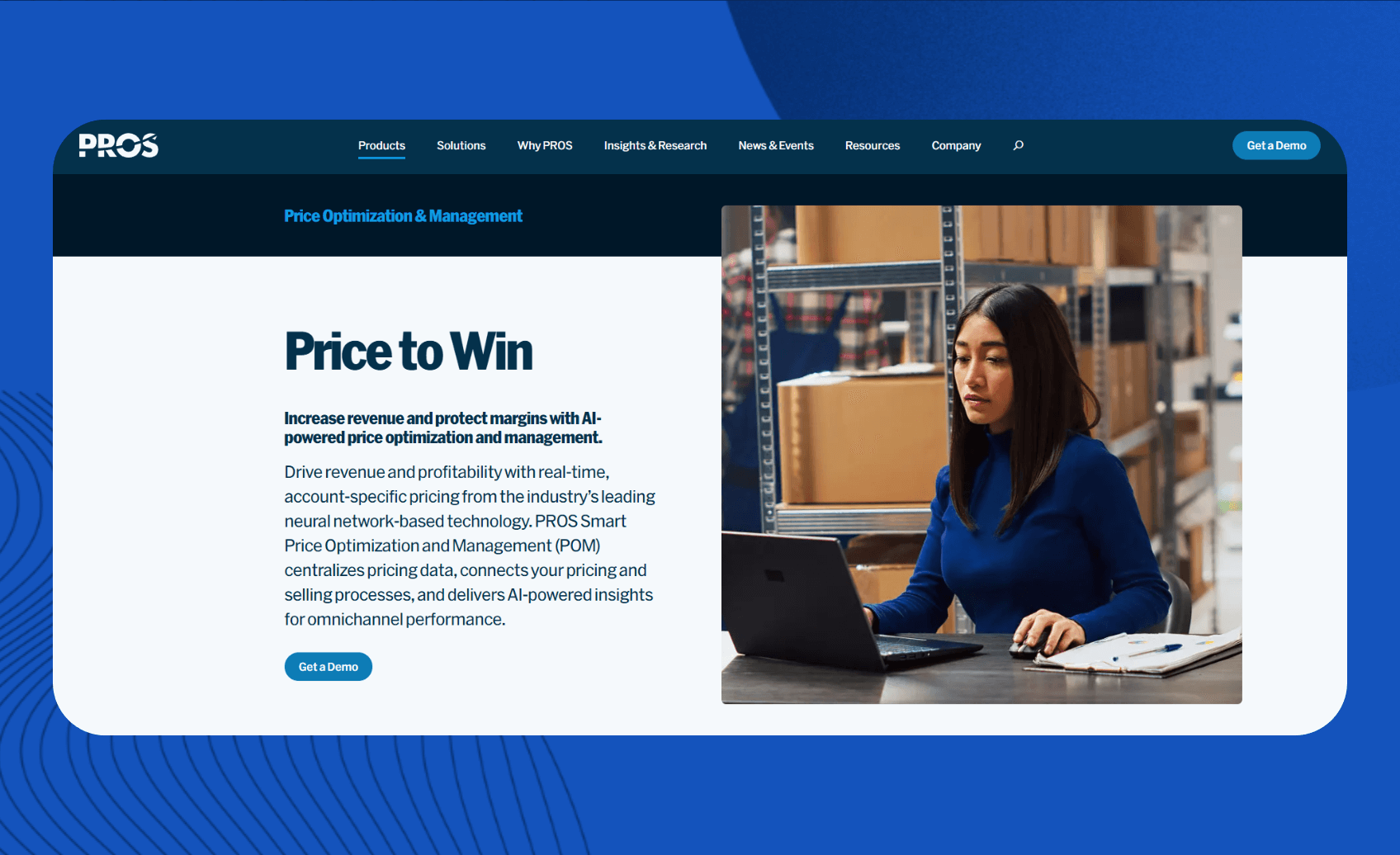
PROS delivers AI-powered price optimization and execution across channels, including advanced dynamic pricing used by leading airlines.
Who it’s for: Pricing leaders in airlines, manufacturing, and large B2B distributors that need neural-network-driven guidance, approvals, and omnichannel delivery tied into ERP, eCommerce, and sales.
Key features
- Smart POM centralizes pricing data, rules, and approvals while delivering prices in real time to every channel. Example: Push new list and customer-specific prices to eCommerce and CPQ simultaneously.
- Dynamic airline pricing adjusts fares and ancillaries based on demand and elasticity. Example: Lufthansa’s expansion of request-specific and dynamic ancillary pricing.
- Editioned packaging and integrations. Example: Deploy through Microsoft and SAP marketplaces when IT standardization matters.
Pros
- Battle-tested in some of the hardest pricing environments. Airline and large-scale B2B case studies show real-time execution under volatility.
- Omnichannel consistency reduces rogue discounting. Central policy with channel delivery improves win rates and margins.
- Strong partner ecosystem. Listings on Azure and SAP help speed procurement and integration.
Cons
- Enterprise complexity. Smaller teams may find configuration and change management heavy.
- Opaque pricing. You will need a custom quote to model TCO.
Pricing: Custom quote based on edition and scope. Assess value by measuring prices against delivery latency, governance fit, and airline-grade optimization needs.
Bottom line
Choose PROS when you need price optimization, governance, and omnichannel delivery at airline or enterprise B2B scale. It shines when real-time analytics software pricing must be executed across many channels without drift.
2. Vendavo: Best for margin analysis and price governance in manufacturing and distribution
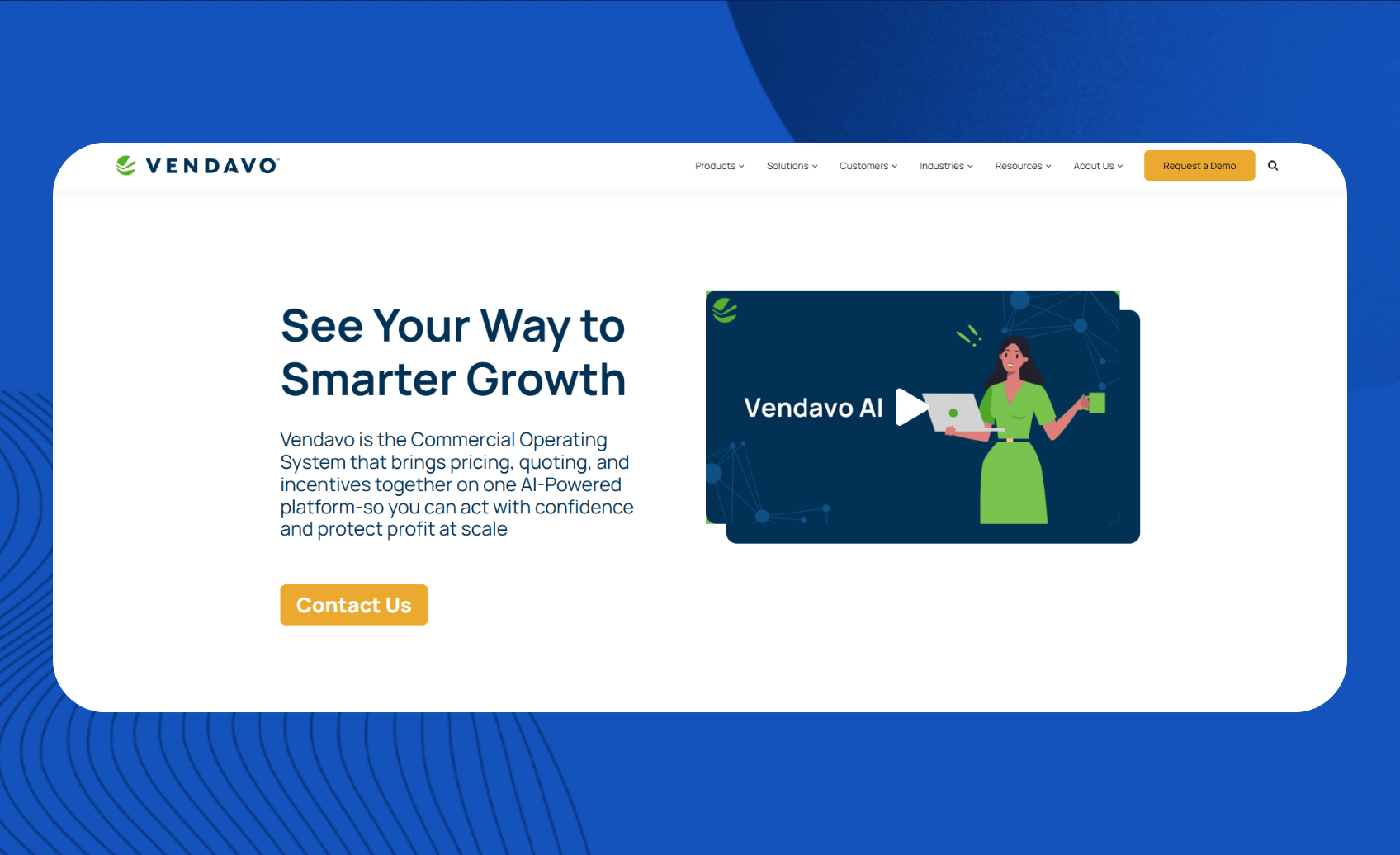
Vendavo unifies price setting, dynamic pricing, and margin analysis so that finance and pricing teams can see where margin moves and act.
Who it’s for: Global manufacturers and distributors that require price-volume-mix analysis, list and customer price governance, and price waterfalls with approval controls.
Key features
- Margin Bridge Analyzer automates price-volume-mix and explains margin shifts by product, region, or channel. Example: Quantify the margin impact of a raw material cost spike by segment.
- PricePoint centralizes customer pricing with machine learning to find profit opportunities. Example: Simulate a new list price and see downstream effects on quotes.
- Profit Analyzer surfaces trends and leakage with dashboards and drilldowns. Example: Flag discount patterns that erode margin in a region.
Pros
- Strong analytics for finance storytelling. Price-volume-mix and diagnostics reduce manual reporting.
- Breadth across the pricing lifecycle. Price management, optimization, CPQ, and rebates reduce tool sprawl.
- Real-time perspective on dynamic pricing. Guidance content and product capabilities support faster responses.
Cons
- Implementation effort. Data hygiene and cross-functional adoption are prerequisites to success.
- Price transparency is not public. Budgeting requires vendor engagement.
Pricing: Custom quote depending on modules and scale. Value improves when you standardize analytics and approvals in one platform.
Bottom line
Vendavo is my pick when finance needs defensible margin narratives and pricing must stay consistent across complex catalogs and channels. It is built for governance, analysis, and change control.
3. Optimix (XPA): Best for European retail teams that need AI-backed price rules and competitive monitoring
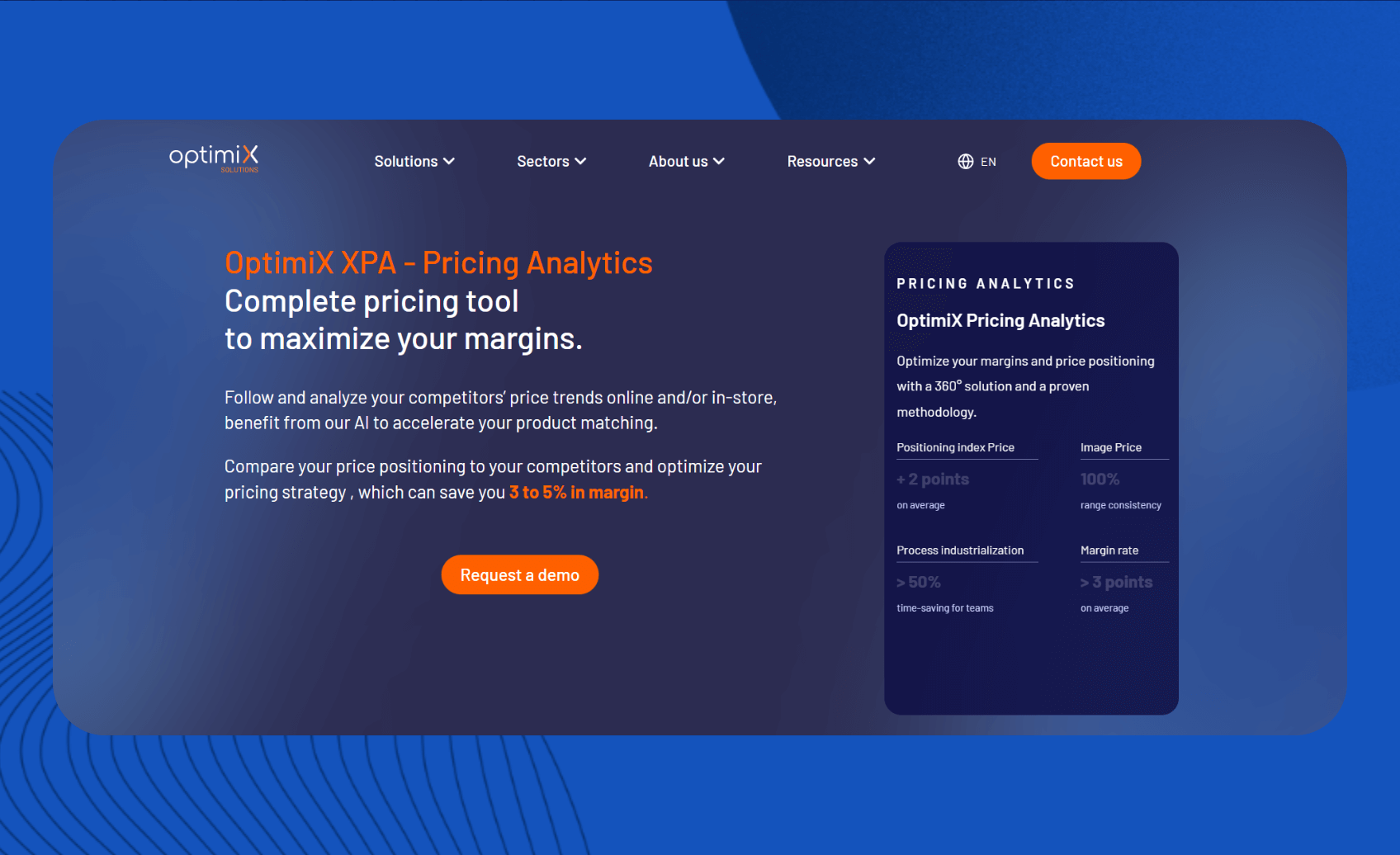
Optimix Pricing Analytics (XPA) helps retailers combine competitor data, rules, and AI to automate pricing and simulate outcomes.
Who it’s for: Grocery, specialty, and multi-country retailers that want local expertise, AI modeling, and competitive monitoring without heavy IT lift.
Key features
- AI-based modeling detects seasonality and trends to refine price recommendations. Example: Adjust fruit pricing by week and region to protect margin while moving inventory.
- Competitive matching and monitoring inform rules and tactics. Example: Keep KVIs aligned to the market while protecting long-tail margin.
- Simulation of price adjustments before rollout. Example: Test a weekend promo and see expected positioning index movement.
Pros
- Retail-native workflows and vocabulary. European retailers will recognize how it maps to their operations.
- Focus on fast operator decisions. Dynamic workflows help category managers move quickly.
- Broad solution footprint including replenishment (XFR). Pricing and supply signals can align when both products are used.
Cons
- Less known outside Europe. Global teams may prefer vendors with larger North American footprints.
- Public pricing unavailable. Budgeting requires direct contact.
Pricing: Custom quote.
Bottom line
Optimix is a practical choice for European retail and grocery pricing teams that want AI assistance plus competitive monitoring inside one workflow.
4. Pricefx: Best for end-to-end pricing with analytics, optimization, and CPQ

Pricefx combines analytics, price setting, AI optimization, and CPQ into modular packages called Plan, Price, and Profit.
Who it’s for: Mid-market to enterprise organizations that want mature governance, quoting, and accelerators to shorten time to value.
Key features
- Plan visualizes pricing and margin performance to spot opportunities. Example: Dashboards highlight where the contribution margin slipped.
- Price segments customers and runs simulations and strategies with AI. Example: Run elasticity-based list price changes by segment.
- Profit equips sales with CPQ, contracts, and negotiation guidance. Example: Generate quotes with guardrails and waterfall visibility.
Pros
- Clear modularity and accelerators. Prebuilt packages help teams launch faster.
- Deep CPQ integration. Sales can act on analytics in the same platform.
- Strong documentation. Analytics is flexible for custom KPIs.
Cons
- Complexity mirrors capability. You will need process clarity and admin ownership.
- Custom pricing only. Expect a discovery and quote.
Pricing: Custom quote based on modules and accelerator usage. Consider the value in reduced custom development and faster CPQ cycle time.
Bottom line
If you want one platform from analytics to quoting, Pricefx is a top choice with a proven modular roadmap and enterprise references.
5. Prisync: Best for e‑commerce competitor tracking and dynamic repricing
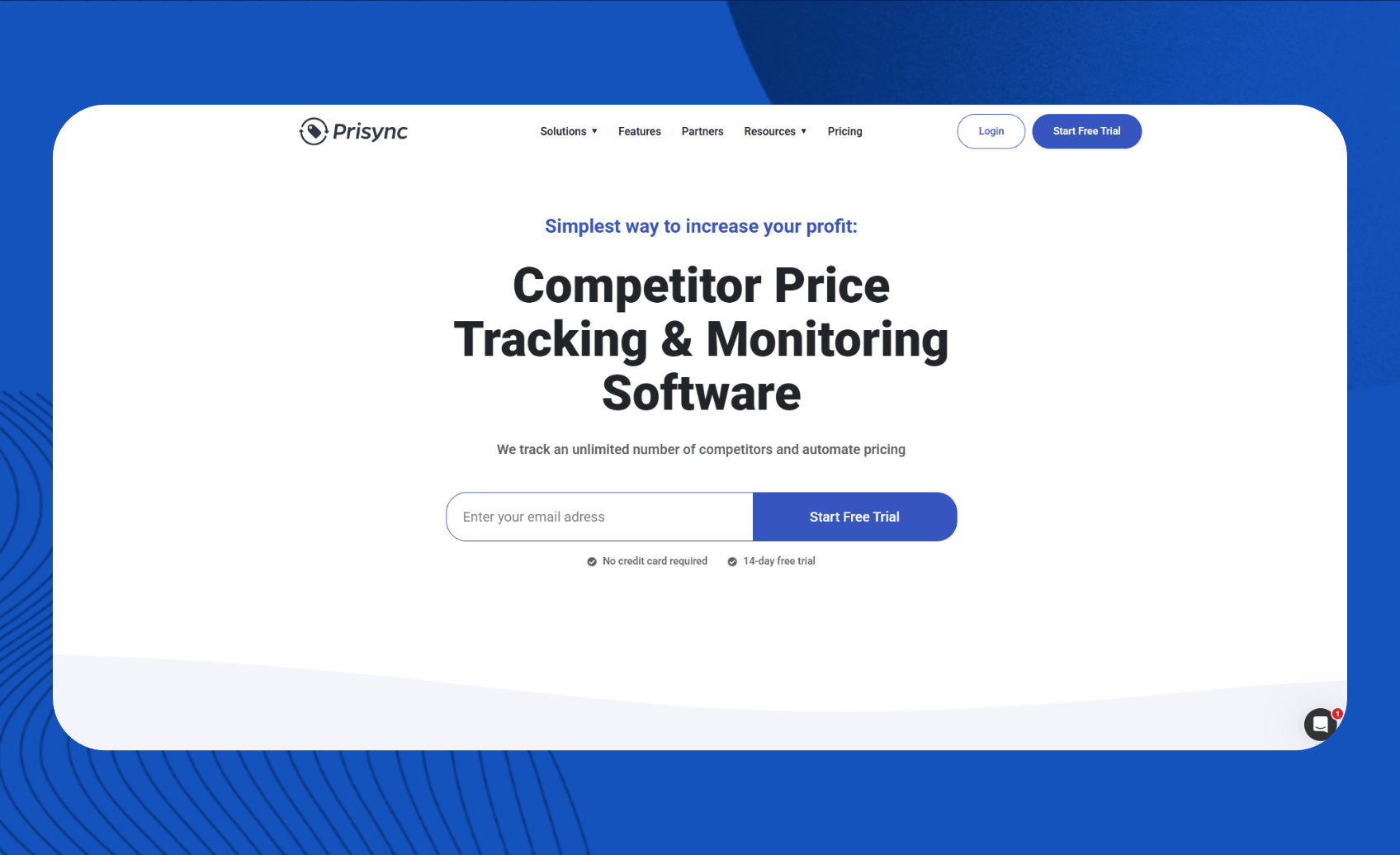
Prisync monitors competitor prices and stock, then applies rule-based repricing to help online stores protect position and margin.
Who it’s for: Small and mid-market e‑commerce brands that need practical product pricing tools without enterprise overhead.
If you are evaluating pricing analytics software for a small business, start with competitor tracking and simple repricing rules to validate coverage and margin impact.
Key features
- Competitor price tracking and alerts. Example: Get notified when a rival drops price on a key SKU and respond with a rule.
- Dynamic pricing rules and SmartPrices. Example: Maintain price as the second-lowest while preserving a minimum margin.
- 14‑day free trial and Shopify app. Example: Test on a subset of SKUs before rolling out.
Pros
- Quick to start with clear e‑commerce workflows. Teams can see value without long projects.
- Active user feedback and reviews. App store reviews cite gains from automated repricing.
Cons
- Not built for complex B2B price governance. It focuses on monitoring and rules, not heavy approvals.
- Advanced API access costs extra. Factor this into TCO if you plan deep integrations.
Pricing: From $99 per month for up to 100 products
Bottom line
For pricing analysis tools in e‑commerce, Prisync is an easy win that automates competitive checks and keeps margins visible.
6. Zilliant: Best for B2B price optimization and seller-ready guidance
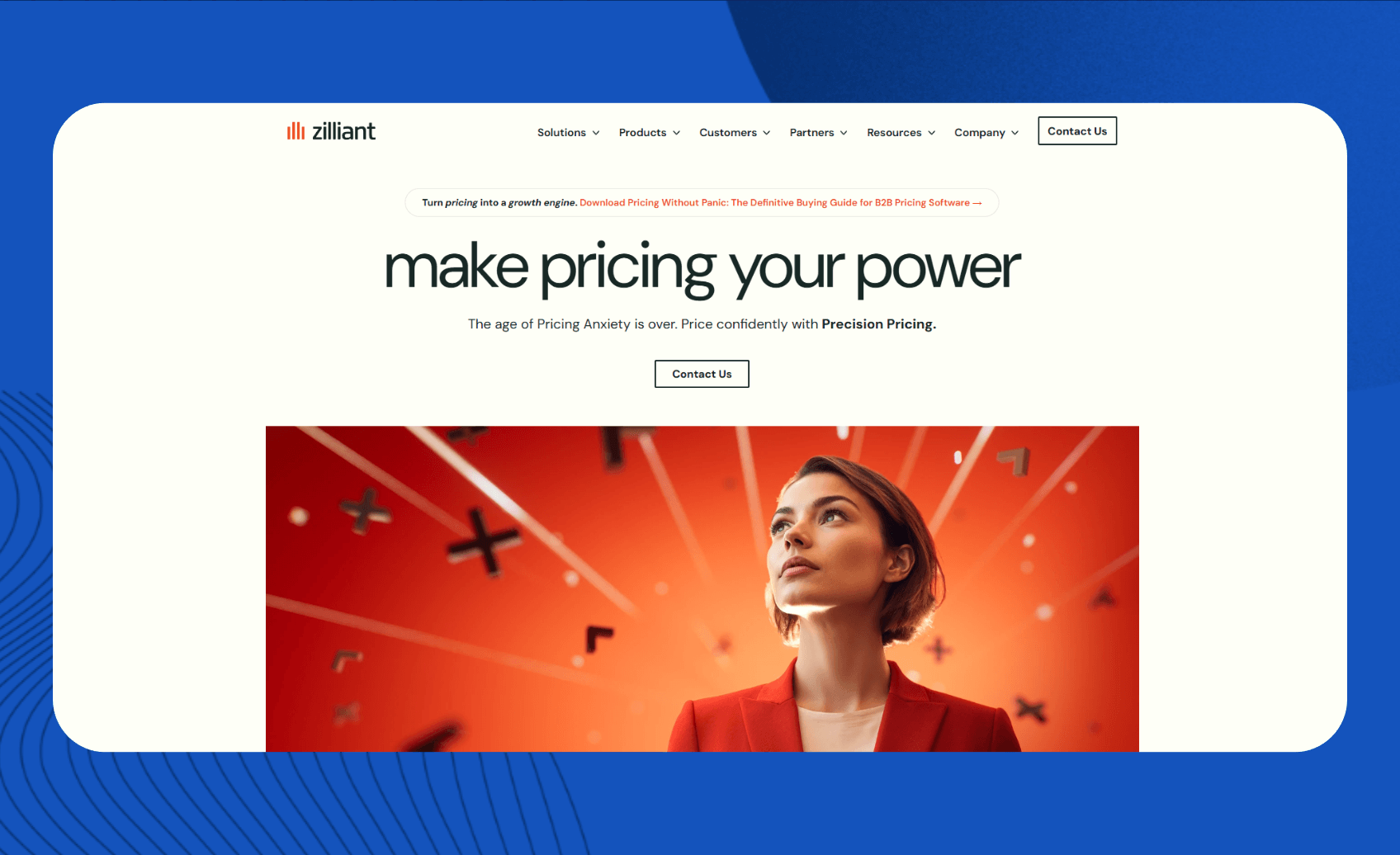
Zilliant’s Price IQ generates segment and customer-specific price recommendations that sellers can defend, with management and transparency features that drive adoption.
Who it’s for: Complex B2B organizations that need explainable optimization, central price management, and guidance in CPQ and agreements.
Key features
- Price IQ optimization calculates target prices using your business rules and objectives. Example: Optimize to margin while respecting minimums and caps.
- Price Management centralizes lists and accelerates updates. Example: Respond to cost changes across thousands of SKUs quickly.
- Transparency features help sales adopt guidance. Example: Show the drivers behind a recommended price.
Pros
- Explainable optimization builds trust. Sellers see why a price is recommended.
- Designed for the entire pricing lifecycle. Integrates with CPQ and agreements.
- Active product velocity. Recent buying guide and updates show ongoing investment.
Cons
- Enterprise rollout and data prep required. Expect a structured project.
- Custom pricing. You will scope and quote.
Pricing: Custom quote. Consider speed to optimized guidance and the reduction in off-policy discounting as value drivers.
Bottom line
Zilliant fits B2B teams seeking optimization that sales can understand and use in live deals.
7. Incompetitor (Intelligence Node): Best for SKU-level competitive intelligence

Incompetitor tracks competitor prices, discounts, and assortment in real time with large catalog coverage and zero-code onboarding.
Who it’s for: Brands and retailers that need granular, rapid competitor visibility and price monitoring to feed pricing rules or promotions.
Key features
- Large product universe and fast refresh. Example: Monitor new competitive launches and adjust promos within the day.
- Price optimization APIs are available when paired with Inoptimizer. Example: Generate smart prices based on inventory and competitor moves.
- MAP monitoring and digital shelf analytics options. Example: Protect price equity across marketplaces.
Pros
- Useful for brands and retailers. Coverage spans price, assortment, and catalog gaps.
- Real-time perspective with historical lookbacks. Teams can spot trends, not just react.
Cons
- Focused scope. For full governance or CPQ, pair with other pricing tools.
- Enterprise pricing for some modules. MAP and advanced analytics can be premium.
Pricing: Enterprise pricing varies by data scope and SLAs.
Bottom line
Incompetitor is a fast path to competitive price intelligence that can feed rule engines or promo planning.
8. Omnia Retail: Best for high-velocity retail dynamic pricing

Omnia combines Dynamic Pricing and Pricewatch so that retailers can automate rules at scale and keep competitive visibility on thousands of SKUs.
Who it’s for: Retailers and brands managing large assortments across channels who want pricing automation with market monitoring and category-level controls.
Key features
- Dynamic Pricing automation with flexible rules. Example: Update daily prices for long-tail SKUs while protecting KVIs.
- Pricewatch tracks market coverage at scale. Example: Monitor millions of price points and benchmark visibility.
- SMB to enterprise fit with guided onboarding. Example: “Single-shop” and enterprise offerings based on assortment size.
Pros
- Built for retail scale. References across well-known brands.
- Balanced mix of monitoring and automation. Category teams get both levers in one platform.
- Market-facing pricing options. Program design supports small catalogs up to enterprise.
Cons
- Pricing not fully public. Expect a custom quote and discovery.
- Learning curve for complex rule sets. Teams need governance for changes.
Pricing: Custom quote. Model ROI on time saved and margin lift across a representative category.
Bottom line
Omnia Retail is strong for retailers that need automated price changes plus competitive intelligence at scale.
How we tested these pricing analytics tools
I evaluated each platform’s ability to turn data into pricing decisions you can ship: data coverage and freshness, model transparency, governance, channel delivery, and the path from analysis to invoice or quote. Here’s what we looked for:
- Data coverage and accuracy. We checked how each tool ingests usage events, costs, and competitor data, then traced sample outputs back to source records to confirm consistency and freshness.
- Path from insight to execution. We verified how recommendations become live prices, quotes, or invoices, reviewing approvals, guardrails, and channel delivery. We favored platforms that reduce manual handoffs and keep governance visible to finance and sales.
- Time-to-value and maintainability. We evaluated setup steps, role clarity, and change cadence. Tools scored higher when non-technical users could adjust metrics, rules, or simulations without code and when documentation supported fast iteration.
The testing process: We reviewed vendor documentation, product sheets, and marketplace listings, then cross-checked pricing visibility and capabilities against recent announcements or help centers.
Which pricing analytics software should you choose?
Choose pricing analytics software that best matches your data, channels, and pace of change.
For enterprise pricing and quoting, Pricefx offers an end-to-end stack. For e‑commerce teams, Prisync is the quickest win for competitive monitoring and rules. Below are clear recommendations.
Choose Pricefx if:
- You manage enterprise-wide pricing with CPQ, contracts, and approvals.
- You want accelerators to shorten time to value.
- You need analytics, optimization, and quoting in one modular platform.
Choose Prisync if:
- You run an online store that lives or dies by market position.
- You want rule-based dynamic repricing with a low-cost trial to validate coverage.
- You need quick, SKU-level monitoring rather than heavy governance.
Avoid these tools if:
- You only sell a single fixed-price SKU and never change promotions. A spreadsheet may be enough.
- You cannot commit data or process owners. All pricing tools require clean data and governance to shine.
- You expect public list prices for every enterprise platform. Many vendors price by scope.
The final verdict
If you need the best pricing analytics software for a modern SaaS company, Pricefx fits when your priority is end-to-end pricing plus CPQ.
Prisync delivers quick wins for e‑commerce. Pick the tool that matches your pricing complexity, then enforce simple governance so insights turn into margin.
Take pricing analytics software to the next level with Orb
Turn forecasting models into measurable revenue with Orb.
Orb is a done-for-you billing platform built for modern SaaS and AI companies. It ingests raw usage events so that you can define your own billable metrics. Here’s how Orb helps:
- Adapt fast, forecast smarter. Use Orb Simulations on historical data to preview revenue and usage outcomes before launching price changes. Orb enables forecasting so that finance and product teams make more informed decisions.
- Bill with precision instead of approximations. Orb reduces billing errors by turning raw usage data into fully auditable invoices. By performing calculations on raw data, pricing updates are reflected accurately on customer bills.
- Update pricing without engineering bottlenecks. Orb SQL Editor and a visual editor make it easy for anyone to define new pricing metrics, then build new plans without rewriting code.
- Extend visibility into every revenue stream. A unified data layer connects usage, pricing, and revenue so you can break down data by segment or plan and track realized revenue.
- Plan confidently with an expert partner. Orb provides guidance during implementation and ongoing reviews, so every pricing move is backed by data.
Ready to turn pricing analytics software into a revenue lift? Explore Orb’s flexible tiers and see how it helps you price with confidence.
FAQs
Is pricing analytics software worth it for small businesses?
Pricing analytics software is worth it for small businesses when you sell online in competitive categories and need automated monitoring or rules.
Tools like Prisync can start at low monthly costs and deliver quick visibility into competitors and margins. Run a 14‑day trial to check coverage and test one category before expanding.
Can I use pricing analytics software for free?
You can use some pricing analytics software through free trials to check data coverage and rule performance before upgrading.
Prisync offers a 14‑day free trial, which is enough to validate data coverage and rule logic. Most enterprise platforms require a paid pilot or custom quote due to scope and integration.

.jpg)

